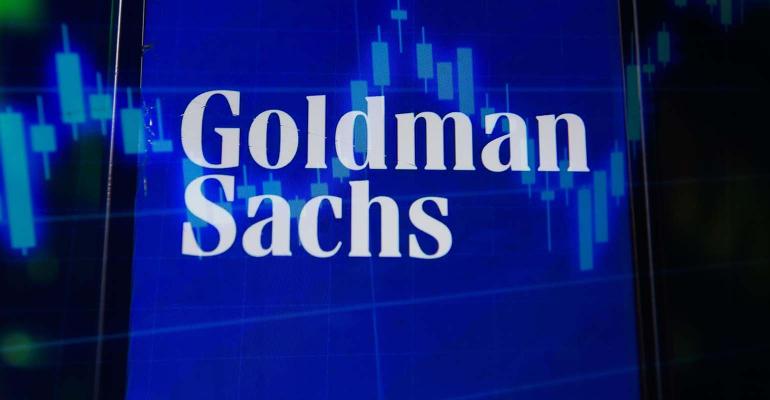(Bloomberg Opinion) -- Morgan Stanley is showing Goldman Sachs the way to go, but the latter has a lot of catching up to do.
Both banks reported 2022 results on Tuesday: Investors cheered one and jeered the other. Morgan Stanley’s shares jumped more than 6% in morning trading while Goldman’s dropped more than 7%.
The story is about the resilience and growth of Morgan Stanley’s asset-management business compared with Goldman’s muffed attempts to develop its own stream of steady, repeatable revenue through a mix of fund management and its ill-fated move into consumer finance.
Investment banking and trading are always volatile, and 2022 demonstrated that in spades. Bond and currency trading boomed across Wall Street, while share trading slowed and fees for advice on deals or fundraising fell apart. Goldman did much better than all rivals in fixed-income trading last year, with revenue up nearly 40% for 2022 compared with 2021. Stock trading was mixed across Wall Street, and most banks were hit with a roughly 50% drop in investment-banking fees.
The trouble for Goldman is that investors no longer value big wins in trading. David Solomon has been trying to address this since he became chief executive officer by increasing the reliable, repeatable revenue that investors want to see. It has not gone that well.
The bank abandoned its mass-market consumer banking ambitions and restructured its divisions with its third-quarter results last October. It detailed the costs of its foray in its latest report: A $1.99 billion loss for its newly constituted Platform Solutions arm in 2022, roughly double the losses in 2021. This is where the losses from its Apple credit card and GreenSky buy-now-pay-later businesses sit: The threat of recession and need to provision for bad loans was the main source of pain.
Morgan Stanley has been on a quest for revenue stability far longer and turbocharged it in recent years with acquisitions of Eaton Vance and E*Trade. Its steady revenue from investment-management fees and net interest income has become ever more important. In 2017, these two businesses accounted for less than 40% of Morgan Stanley’s total revenue. In 2022, they made up more than half for the first time — 54%.
At Goldman, asset-management fees and interest have risen from nearly 27% to 35%. That is progress, but not enough and not all of the right kind: Goldman experienced a bigger decline in its transactional revenue than Morgan Stanley did. In other words, the rebalancing Goldman has achieved is much more about the collapse in investment banking fees than it is about growth in stable income.
Now, there is an argument that Goldman can reduce the volatility of its trading revenue by making clients more reliant on its services. It is investing heavily in technology designed to encourage investor clients to bring more business to the bank and keep it there, for example by building interfaces for investors to plug into Goldman’s market data, pricing and valuation systems. But markets and animal spirits will always ebb and flow. If everyone is fearful of war and inflation, they’re just going to trade less.
Goldman also seems to have a cost problem. The bank cut staff costs by 14.5% in 2022, the most among peers, but that followed a 33% jump in 2021, far more than rivals. In the fourth quarter, it disappointed analysts by recording its highest ever end-of-year staffing bill at $3.76 billion, which was also the most as a proportion of revenue in a decade.
Expenses are a particular issue on the asset-management side, which is Goldman’s main hope for rebalancing its revenue in future. This unit now contains the steady fees from fund management and private banking but also the extremely volatile results of Goldman’s own debt and equity investments.
Income from these investments fell by $10 billion, or 85%, in 2022 compared with 2021. That led to a nearly 90% drop in profits for the division. It is hard to adjust costs quickly enough to deal with a revenue decline that large, to be sure, but that’s not the real problem: The unit’s expenses are too big for the fee revenue it generates. Excluding investment results and provisions for credit losses, this division recorded big pretax losses in 2020 and 2021 and a tiny $48 million profit in 2022.
Over time, Goldman will sell down its volatile investments and increase the fees its gets from managing other people’s money, but that’s likely to take years. Goldman is a long way behind Morgan Stanley.
More From Bloomberg Opinion:
- Strange Times for JPMorgan, Other Big US Banks: Paul J. Davies
- A Bad Earnings Season Could Turn Out to Be Good: Jonathan Levin
- Buoyant Markets Need to Watch 4 Risk Factors: Mohamed El-Erian
Want more Bloomberg Opinion? OPIN <GO>. Or you can subscribe to our daily newsletter.
To contact the author of this story:
Paul J. Davies at [email protected]





